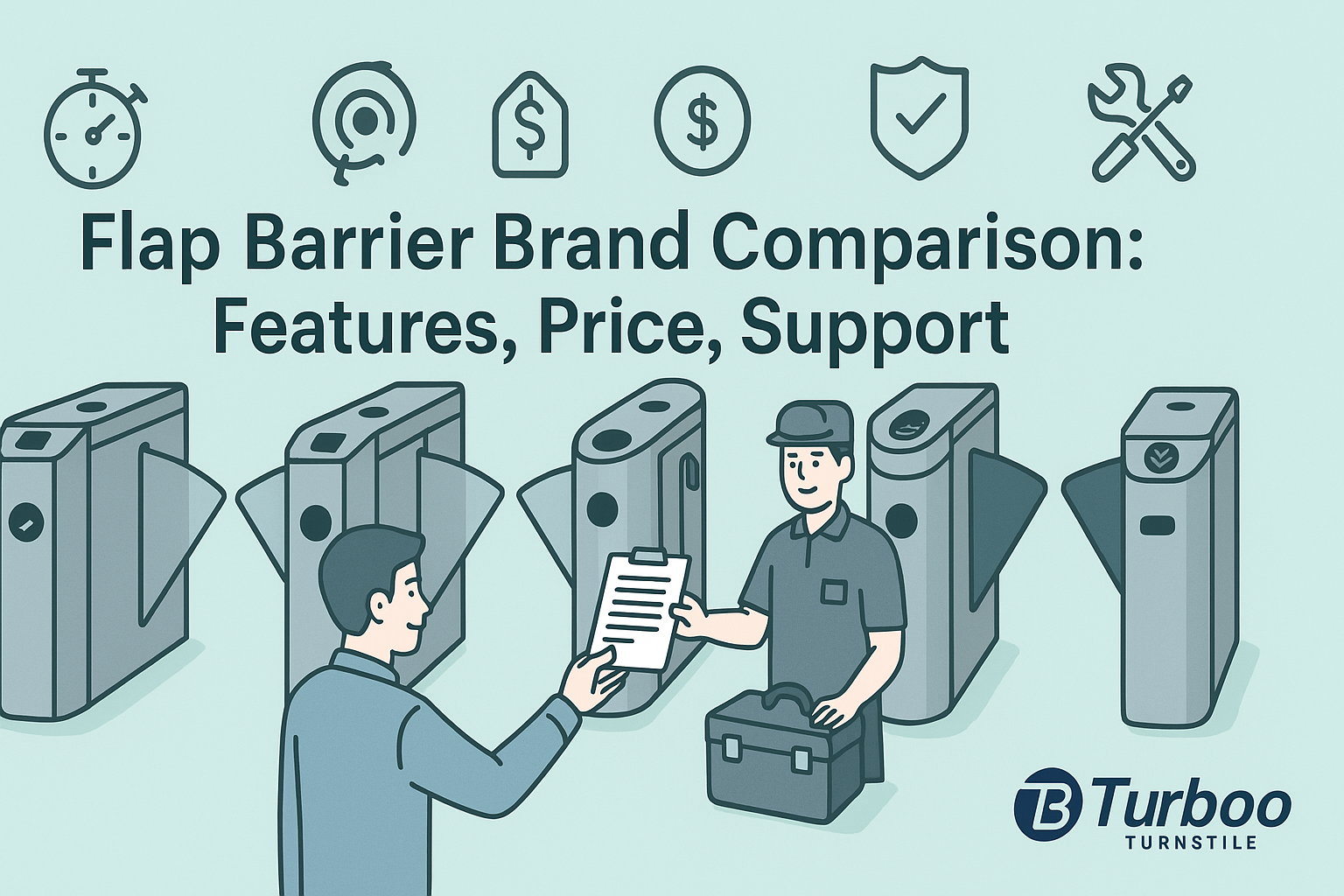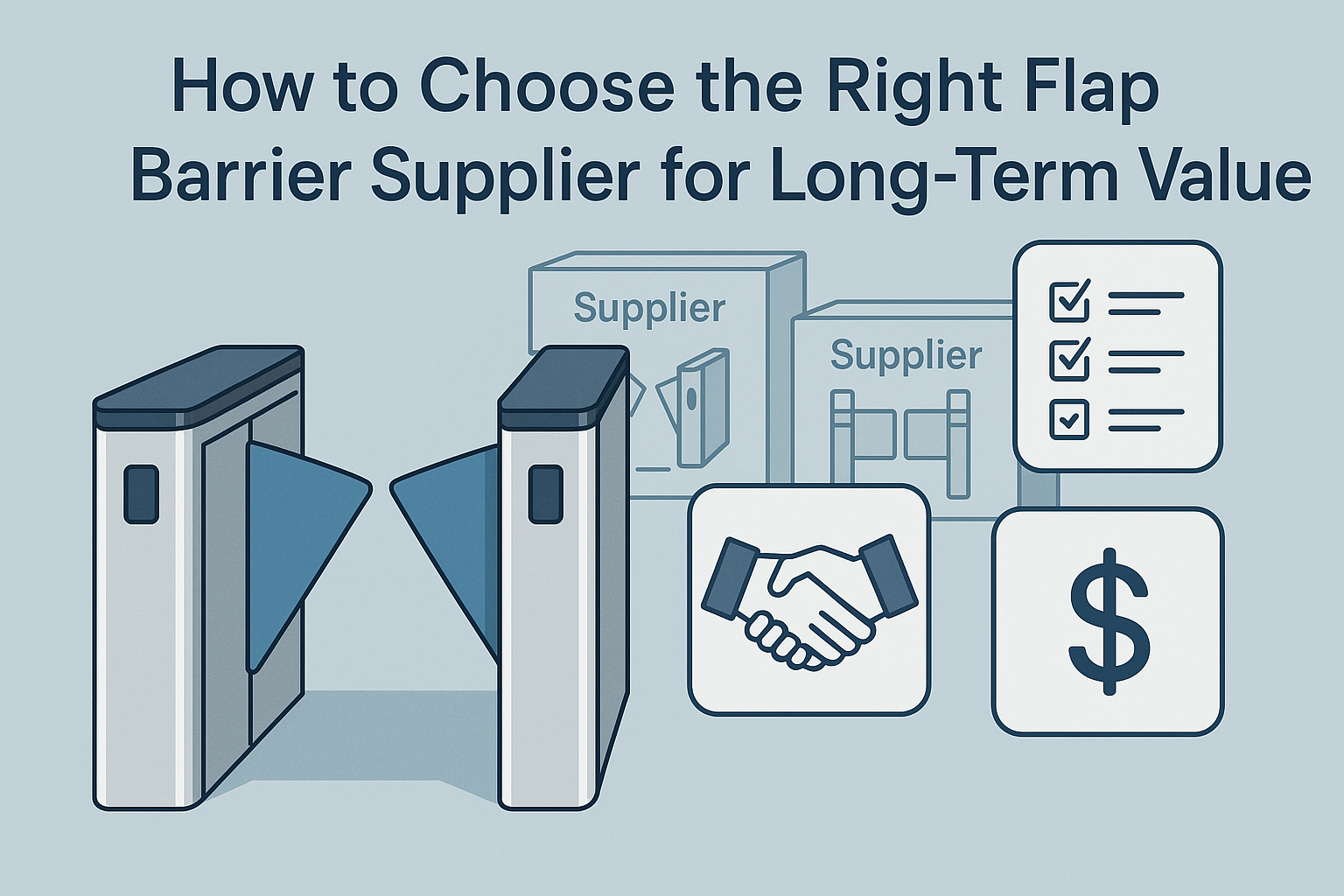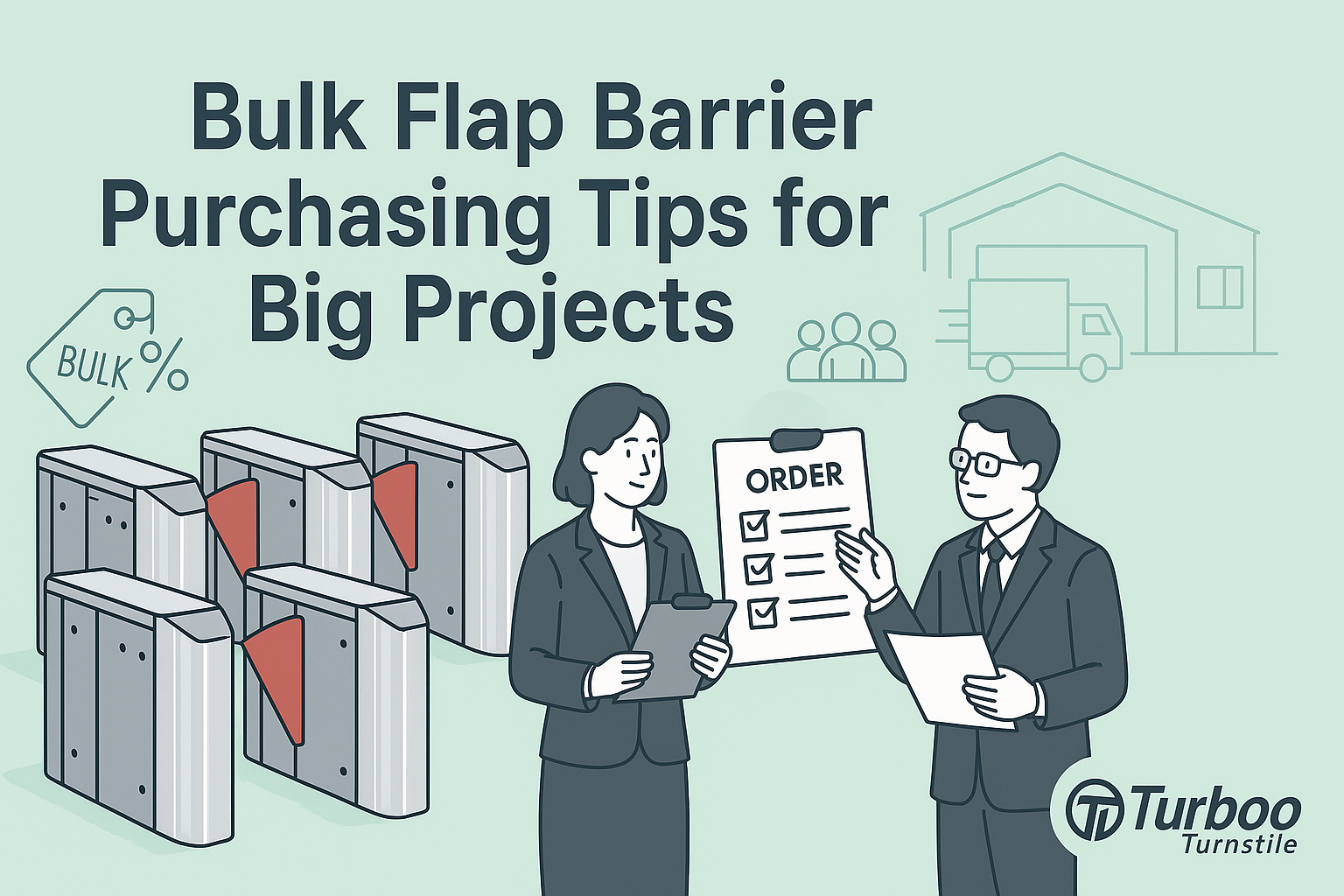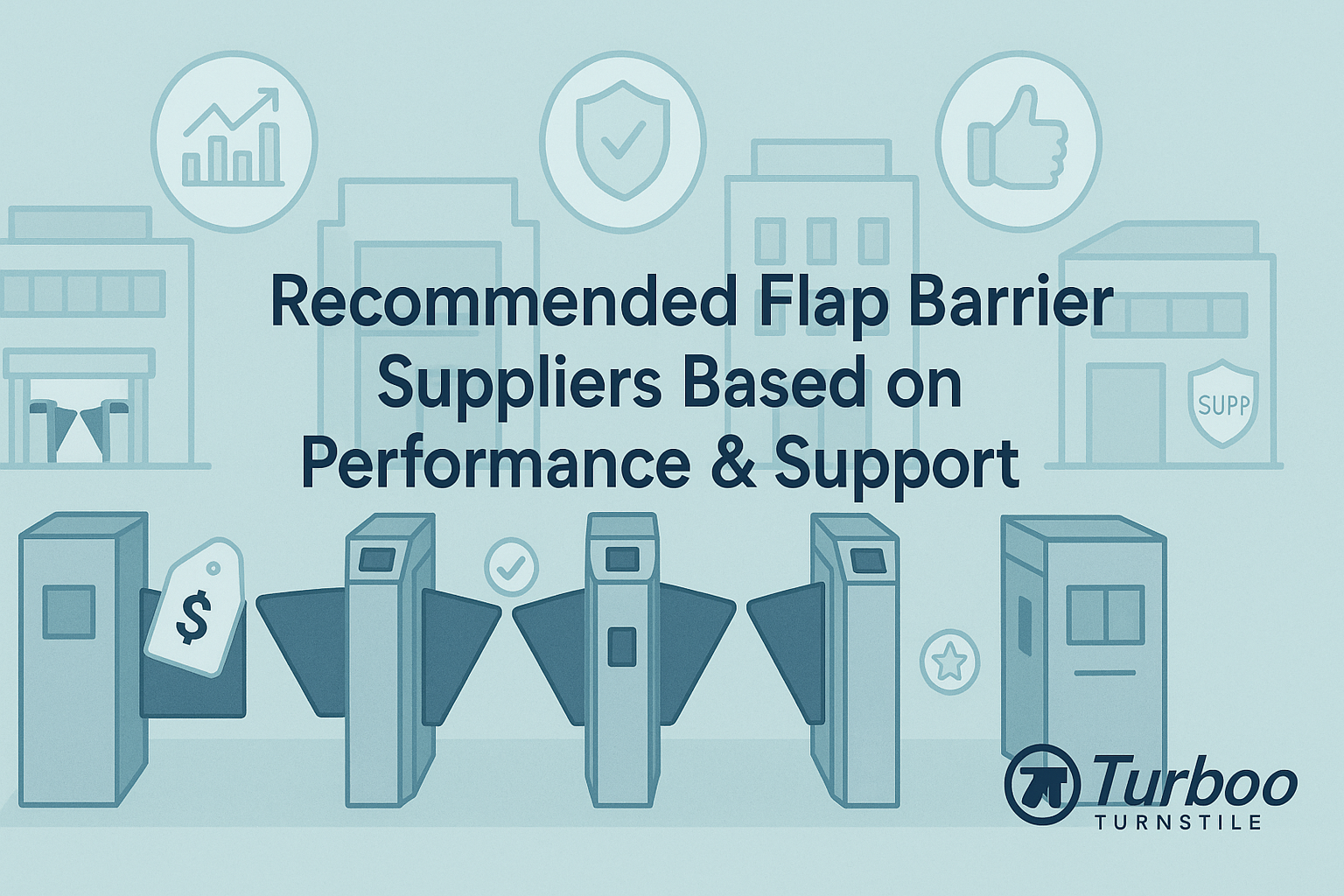Flap Barrier Brand Comparison: Features, Price, Support


Choosing the right flap barrier brand can be a daunting task for many procurement professionals, security managers, and facility planners. With so many manufacturers offering varying features, pricing, and levels of support, it’s easy to become overwhelmed. A wrong choice could lead to unexpected costs, maintenance issues, or operational inefficiencies that could ultimately hurt the security infrastructure of your facility.
The solution to this challenge lies in a flap barrier brand comparison. A structured, side-by-side evaluation allows you to compare key aspects such as product features, pricing, and vendor support, helping you make a smarter, more confident purchasing decision. By understanding what each brand offers, you ensure that the flap barrier you choose will not only meet your security needs but also provide value for money and long-term reliability.
In this guide, we will compare some of the leading flap barrier brands for 2025. We’ll analyze the features, pricing, and support services of these brands, offering insights that will help you make an informed decision about which barrier system is the best fit for your facility.
Key Features to Compare in Flap Barrier Brands
When choosing a flap barrier brand, understanding the core features is essential. Different brands offer a range of functionalities, and it’s important to evaluate which features are most relevant to your facility’s needs. Key aspects to consider include:
- Speed and Throughput Capacity: How fast can the barrier open and close? How many users can pass through per minute? For high-traffic areas like airports or office buildings, throughput capacity is a critical factor in ensuring smooth, efficient operations.
- Safety Features: Look for features like anti-tailgating technology, which prevents unauthorized access when someone tries to follow an authorized person through the barrier. Other safety features, such as anti-pinch sensors and obstacle detection, are also important in preventing accidents.
- Integration with Access Control Systems: A modern flap barrier should integrate seamlessly with your facility’s access control systems, whether that’s RFID, biometric scanners, or mobile access platforms. Some brands offer better integration capabilities than others, making them more flexible for future upgrades or compatibility with existing infrastructure.
- Smart Features: As buildings become more connected, smart and cloud-based features are increasingly in demand. Barriers with remote monitoring, real-time alerts, and system diagnostics provide additional convenience for facility managers and security teams.
By comparing these features, you can determine which flap barrier brand offers the best combination of security, efficiency, and future-proofing.
Build Quality and Durability: How to Assess a Brand’s Construction
Another key area to evaluate in a flap barrier brand comparison is the build quality and durability of the system. The construction of the barrier directly impacts its performance and lifespan, making it an essential factor when making your decision.
Leading brands typically use high-quality materials such as stainless steel and tempered glass for the barrier’s framework and wings. Stainless steel is highly resistant to rust and corrosion, which makes it ideal for environments exposed to moisture or high humidity. For areas with heavy foot traffic, durability becomes particularly important as the barrier will be subjected to frequent use.
Consider the following when assessing build quality:
- Materials: What are the barriers made from? Are they built to withstand the elements (for outdoor installations) or constant use (for high-traffic areas)?
- Construction: Look for well-constructed barriers with smooth, precise movements and durable parts. Poorly designed components can result in frequent breakdowns or malfunctions.
- Maintenance Needs: High-quality systems tend to require less frequent maintenance, which can lower your long-term operational costs. Check if the barrier is easy to maintain, clean, and repair.
Ultimately, the build quality of the barrier reflects not just how well it performs initially but also how it will hold up over time. A more durable, high-quality system may come at a higher price, but the long-term value and reduced maintenance costs could make it a better investment.
Pricing and Value Comparison
One of the most significant factors to consider when comparing flap barrier brands is pricing. The price can vary significantly depending on the brand, features, and build quality of the system. While it’s tempting to go for the lowest-priced option, it’s essential to remember that price often correlates with the value offered by the product.
Entry-level flap barriers are typically more affordable, but they may lack advanced features or have lower throughput capacity, which could become a bottleneck in high-traffic areas. Mid-range and high-end barriers offer more advanced features, such as remote diagnostics, anti-tailgating technology, and integrations with existing access control systems. These models usually come with better warranties and support services, but will cost more upfront.
When assessing price vs. value, it’s important to consider:
- What’s included in the price: Does the price include installation, training, or software updates? Are there hidden costs for future upgrades, maintenance, or servicing?
- Cost over time: Look beyond the upfront cost and consider long-term costs such as energy consumption, maintenance, and any potential system upgrades.
- Total cost of ownership: This includes installation, maintenance, energy usage, and any necessary upgrades. Brands that offer lower upfront costs might incur higher operational costs later on.
To compare prices more effectively, consult the price comparison guide, which provides detailed pricing tiers and cost breakdowns for various brands and models.
Vendor Support and Warranty: Ensuring Long-Term Reliability
One of the most critical aspects of a flap barrier brand evaluation is the level of support provided by the vendor. A high-quality product is only valuable if you have reliable support when issues arise. Factors such as warranty terms, customer service responsiveness, and post-purchase support can significantly impact the success of your flap barrier installation.
Leading brands typically offer:
- Comprehensive warranties that cover key components such as the motor, control board, and sensors. The length of the warranty and what it covers can vary, with some brands offering 1-year coverage, while others offer warranties lasting up to 5 years or more.
- Responsive customer service that can assist with troubleshooting, repairs, and maintenance. Reliable support is essential for minimizing downtime and ensuring that the system continues to function efficiently over its lifetime.
- After-sales services include installation support, ongoing maintenance, and staff training. Some vendors provide extended service contracts for preventative maintenance, ensuring that your flap barriers remain in optimal working condition.
For more information on trusted suppliers and their support offerings, refer to the list of recommended barriers available here.
Ease of Integration and Maintenance
Another crucial factor when comparing flap barrier brands is how easily the system integrates with your existing infrastructure. A barrier that is difficult to integrate or requires frequent maintenance can create unnecessary challenges and costs down the road.
When considering integration, check if the flap barrier is compatible with your current access control systems. Whether you use RFID cards, biometric access, or mobile solutions, it’s important that the barrier can seamlessly work with your chosen access system. Leading brands will offer flexible integration options that support common standards like Wiegand, RS-485, and TCP/IP, making them easier to incorporate into existing setups.
Additionally, look at the maintenance requirements. Some brands design their systems with easy-to-access components, making repairs or part replacements simpler. Others may require more specialized tools or expertise for maintenance. Easy maintenance is essential to reduce operational downtime and ensure the system stays functional over time.
Consider the availability of spare parts and how easily they can be replaced. If a barrier is difficult or expensive to repair, it can result in significant costs over time. Some brands provide a clear path for upgrades, allowing you to replace or upgrade certain components without replacing the entire system. This can help extend the system’s useful life and save costs in the long run.
Customer Feedback and Reviews: What Real Users Are Saying
Customer feedback and expert reviews are valuable tools when comparing flap barrier brands. User reviews provide insights into the real-world performance of a barrier system, offering information about its reliability, ease of installation, and long-term performance. Reviews are often more revealing than product brochures because they reflect actual experiences with the system in everyday use.
Look for reviews that discuss:
- Performance in high-traffic areas: How well does the barrier hold up during peak hours or in crowded environments?
- Ease of installation: Was the system easy to set up? Were there issues with compatibility or integration?
- Reliability and uptime: Are there frequent malfunctions, or does the barrier run smoothly for long periods?
- Customer service experiences: How responsive and helpful was the vendor’s support team when users faced issues?
Expert reviews and independent assessments from third-party sources can also provide a more objective look at the flap barrier’s performance. These reviews often test barriers under controlled conditions and evaluate factors like throughput speed, sensor accuracy, and ease of integration. Refer to brand analysis from trusted industry sources to see how brands perform in comprehensive, side-by-side tests.
For more detailed insights, check product rankings and expert opinions from platforms like Gartner or industry publications that specialize in security technology.
Industry Trends and Emerging Features in 2025
As we move into 2025, new industry trends and emerging features are reshaping the flap barrier market. Brands that adapt to these trends are likely to be the leaders in the coming years.
One trend gaining momentum is the integration of smart technologies in barrier systems. Features like remote monitoring, real-time diagnostics, and cloud-based management are becoming more common. These technologies allow security managers to monitor system performance from anywhere, receive alerts for any issues, and even adjust settings remotely. This level of convenience and control is especially beneficial in large facilities or those with multiple entrances.
Sustainability is another trend influencing the flap barrier industry. As more organizations prioritize environmental responsibility, manufacturers are responding by designing energy-efficient products with sustainable materials and recyclable components. Barriers that consume less power, have longer-lasting components, and are made from eco-friendly materials help organizations meet their sustainability goals while still providing reliable security.
Another important feature being integrated into barrier systems is biometric access integration. As security needs evolve, many brands are now offering barriers that can seamlessly integrate with facial recognition, fingerprint scanning, or even iris recognition systems. This added layer of security is in high demand in environments that require high levels of authentication.
Staying ahead of these trends will ensure your chosen brand remains relevant and can adapt to new challenges and opportunities in the coming years. Look for brands that demonstrate a commitment to innovation, offering solutions that not only meet current needs but are also future-ready.
Comparing Leading Flap Barrier Brands
Now that we’ve covered the key factors for evaluating flap barrier brands, let’s take a closer look at some of the leading brands for 2025. Each brand has its unique strengths, making them suitable for different types of installations.
- TURBOO: Known for high-quality, durable systems, TURBOO is a leading brand with a reputation for seamless integration and innovative features. Their remote diagnostics, anti-tailgating technology, and modular design make them a great choice for both small and large facilities.
- SenTech: This brand offers affordable yet reliable flap barriers that are well-suited for facilities with lower traffic or those on a budget. SenTech’s ease of use and quick installation make it ideal for businesses looking for efficient but cost-effective solutions.
- Boon Edam: Recognized for high-end, robust barrier systems, Boon Edam provides solutions that are perfect for high-security environments. Their biometric integration, advanced software options, and heavy-duty construction make them a top choice for facilities that demand reliability and cutting-edge security features.
- Hikvision: Known for their expertise in video surveillance and security technology, Hikvision’s flap barriers are ideal for businesses already using their products. Their integration with surveillance systems, smart features, and strong brand reputation make them an appealing choice for tech-forward facilities.
- ZKTeco: A great option for facilities looking for biometric access and mobile-based solutions, ZKTeco’s flap barriers are designed to work with advanced security systems. They are particularly popular in industries requiring high levels of security, such as government buildings and data centers.
Each of these top brands has strengths in different areas, whether it’s price, performance, or advanced technology. The best choice will depend on the specific needs of your facility.
Conclusion
Choosing the right flap barrier brand for 2025 requires a thorough evaluation of the brand’s features, pricing, and support offerings. By comparing these factors, you can ensure that you select a brand that provides excellent value, reliable performance, and ongoing support. A strong brand reputation and cutting-edge features can help your facility run more smoothly and securely, providing long-term peace of mind.
FAQs
Q1: What is the most important factor in choosing a flap barrier brand?
The most important factor is aligning the brand’s features with your facility’s specific needs, whether that’s throughput capacity, security features, or ease of integration.
Q2: Are high-end flap barriers always better?
Not necessarily. High-end barriers offer advanced features but may not always be needed for lower-traffic facilities. Match the features to your actual requirements.
Q3: How can I tell if a flap barrier brand is reliable?
Look for customer reviews, warranty terms, and industry certifications. A reliable brand will offer good support and durable, high-quality products.
Q4: Are there eco-friendly flap barrier brands?
Yes, many brands now offer energy-efficient systems and use sustainable materials to help meet green building standards.
Q5: How long does a flap barrier system typically last?
A good-quality flap barrier system should last 7–10 years with proper maintenance, but some high-end models may last longer.












